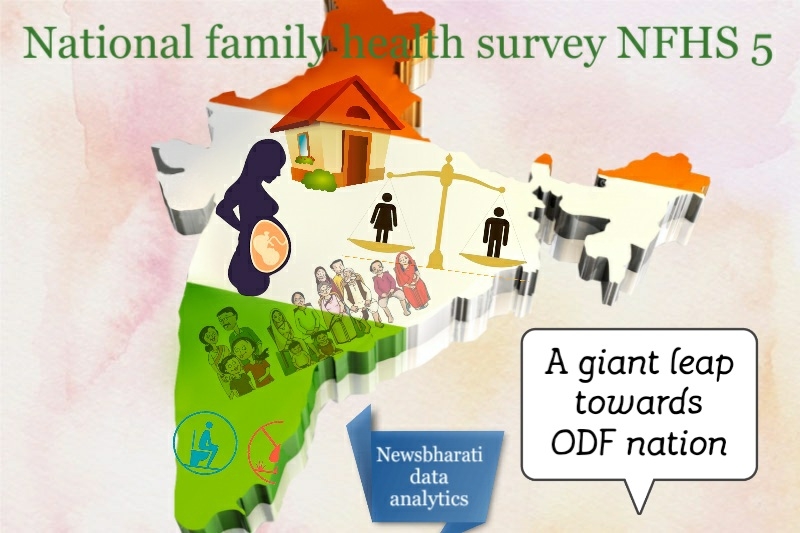A giant leap towards ODF nation
The NFHS 5 data shows that India has taken a decisive step towards becoming an ODF nation.
Total Views |

The national family health survey NFHS generates a wealth of information for various reasons. It is a unique survey.
NFHS 5 highlights
- 17 Field Agencies gathered information
- International institute of population science was the nodal agency
- 636,699 households, 724,115 women, and 101,839 men covered.
- Data collected on 131 indicators
- measurements of height, weight, and haemoglobin for children, and measurements of height, weight, haemoglobin, blood pressure, and random blood glucose for women and men.
There is a trickle of articles analyzing the latest NFHS 5 published in september 2021. But the lutyen's media and the Khan market gang is rather subdued in publishing analytical articles this time for two reasons. Since 1992 the survey is being conducted atter every 5 years. The only gap in this precious data is between 2005 NFHS 3 and 2015 NFHS 4, when the UPA government skipped this survey. It was difficult for these people to criticize their darling UPA government and it is more difficult for them to appreciate that in spite of the exceptional pandemic situation the survey was completed by this government.
Another important reason is that NFHS 5 reflects the spectacular achievements of this Government on many indicators. The data on sanitation which we will analyze here is an example.
For more info on this map see :
Many other indicators like the number of women having bank accounts or using mobiles etc show excellent progess. There are also some worrying points on which the society needs to progress urgently. This series will cover many such indicators.
What does the sanitation data show
The NFHS 1 data of 1992 shows that 87% of rural population was practicing open defecation at that time. After almost 25 years, that percentage was reduced to 63%. And in just 5 years after that the percentage is now less than 36%. The graphs show people using improved systems of sanitation.
The data reveals one overlooked aspect. The situation in urban areas actually detoriated from 1992 to 2015 in terms of sanitation facilities. In the period of 2015 to 2021 the trend has reversed and urban areas also show significant progress. It should be noted that this is the percentage of people actually using improved sanitation systems. Global experience has shown that access to improved sanitation systems is the first major step and usage of that system follows after a certain time lag with persuasion and follow-up action. Access to improved sanitation is almost 100% according to Govenment data displayed on Swachh Bharat mission. The district-wise progress of accessibility in last 5 years is reflected in the chart by statista.com
Washdata is a web portal developed by WHO and UNICEF to monitor the progress of household drinking water, sanitation and hygiene across the countries. According to their data monitoring also, number of people practicing open defecation has been drastically reduced in India in last 5 years.
Where do we stand globally?
The data on world bank shows that there are still 95 countries where open defecation is in practice. With all the rapid progress India made in last 5 years, it is now on number 33. Still quite a way to go to join those 140+ countries which are ODF. But we have moved decisively in that direction.
Many indicators of the HFNS 5, when analyzed and compared with previous NFHS surveys and global data of various countries, illuminate on various aspects of our social achievements. This series will explore them one by one. Stay tuned.

